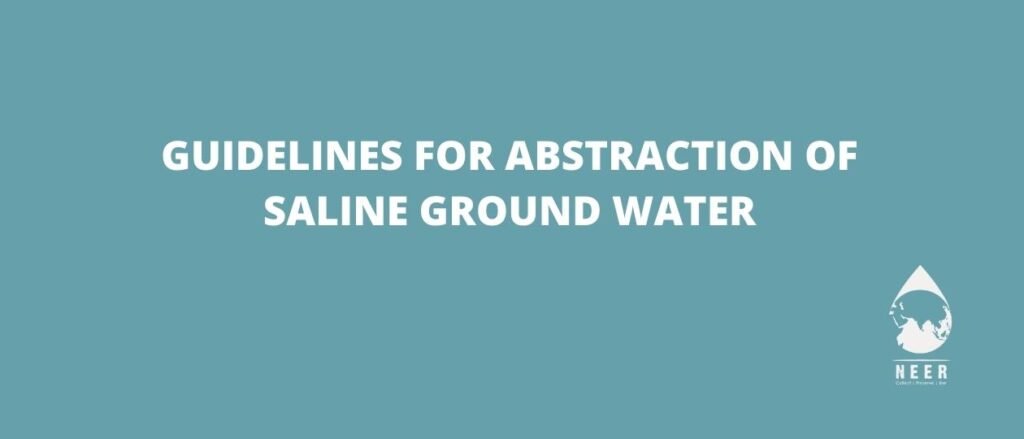Tag: drinking water
August 25, 2022
By: admin
Is cgwa NOC mandatory?
NOC of Groundwater withdrawal from CGWA or State Groundwater Authority is mandatory for all Industries and Infrastructure projects. CGWA has made a panel of Accredited Consultants who understand the matter technically, administratively, and the applicable laws. Everybody who has to take permission to draw Groundwater is advised to avail services of the Accredited Consultant. The [...] Read more
July 9, 2022
By: admin
Guidelines for abstraction of saline ground water
Detailed Guidelines for Abstraction of Saline Ground Water Water having above EC above 5000 µ siemens/cm at 250C is Saline Water. Any user desirous of utilizing saline groundwater is permitted to extract saline ground water and will be exempted from payment of ground water abstraction / restoration charges. However, all such users need to have [...] Read more
July 9, 2022
By: admin
Guidelines for Bulk water suppliers
Guidelines for Ground Water abstraction for bulk water supply As per the new guidelines, all those users abstracting ground water and using it for supply as bulk water supplies through private tankers will now mandatorily seek No Objection Certificate for ground water abstraction. Documents to be submitted with the application i. Proof of ownership of [...] Read more
July 9, 2022
By: admin
Why do we get sufficient groundwater in one place and not much in another?
The occurrence and distribution of groundwater are controlled primarily by the geology of the area and the quantum of recharge received by the existing aquifer formations. Thus the alluvial tracts of river valleys and the coastal plains containing alternative deposits of sand and clay of varying thickness are rich in groundwater. Regions underlain by hard [...] Read more
July 9, 2022
By: admin
What are the factors that control groundwater flow through an aquifer?
Water first enters an aquifer through gravity-induced downward movement (percolation), but it also flows in a lateral direction within an aquifer. This flow can occur due to the dip (slope) of the aquifer or artificial conditions induced within the aquifer, such as pumping or recharging. Natural groundwater flow through an aquifer is relatively slow and [...] Read more
July 9, 2022
By: admin
Do wells showing shallower water levels yield more water?
Regionally, the top surface of the saturated zone is visualized as flat as the top of a table and hence this surface is referred to as the water table. The regional water table is not as flat as we presume. The water table tends to follow the shape of the topography. Therefore, the water table [...] Read more
July 9, 2022
By: admin
If the terms water table and water level mean more or less the same then why do we have two different terms?
Sometimes they mean the same, but not always. While the uppermost level (top) of the saturated zone in an unconfined aquifer is the water table, the water level seen in a well is commonly referred to as water level. When a well is dug in an unconfined aquifer, water from the formation seeps into the [...] Read more
July 9, 2022
By: admin
Where does this water which eventually provides us with so much groundwater, come from?
Rainfall (precipitation), an integral part of the hydrological cycle, is the source of all fresh water on the earth. We tend to misjudge the enormous quantity of water brought down from rainfall in our neighbourhood. For example, the volume of 1 metre (1000 mm) of rainfall that falls over 1 hectare (10000 sq. m) of [...] Read more
July 9, 2022
By: admin
Which rock formations are suitable for transmitting groundwater?
From the hydrogeology point of view, rock formations are categorized conveniently as unconsolidated (loose), consolidated (hard) and semi-consolidated. Recent and older alluviums are unconsolidated sedimentary formations, usually as alternate beds of sand and clay (or shale) with varying thickness and proportion. The sand formation is a natural carrier of water; the coarser the grain size [...] Read more
July 9, 2022
By: admin


